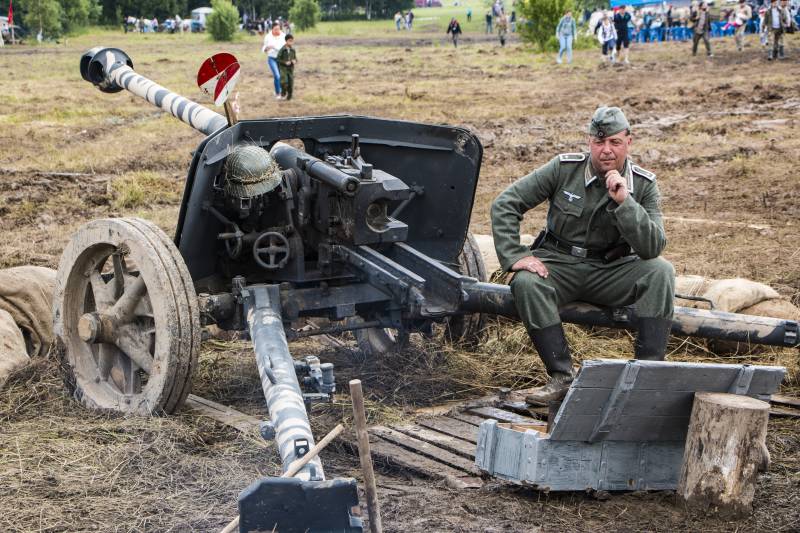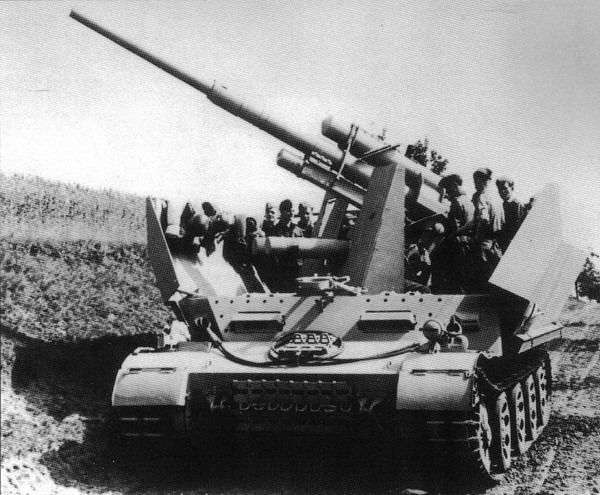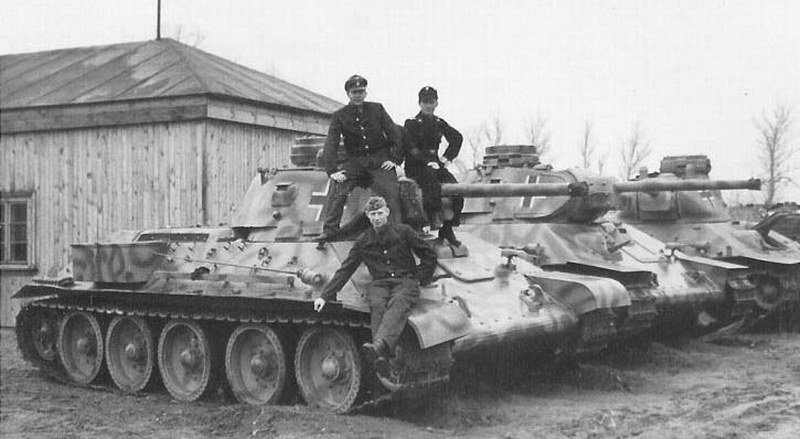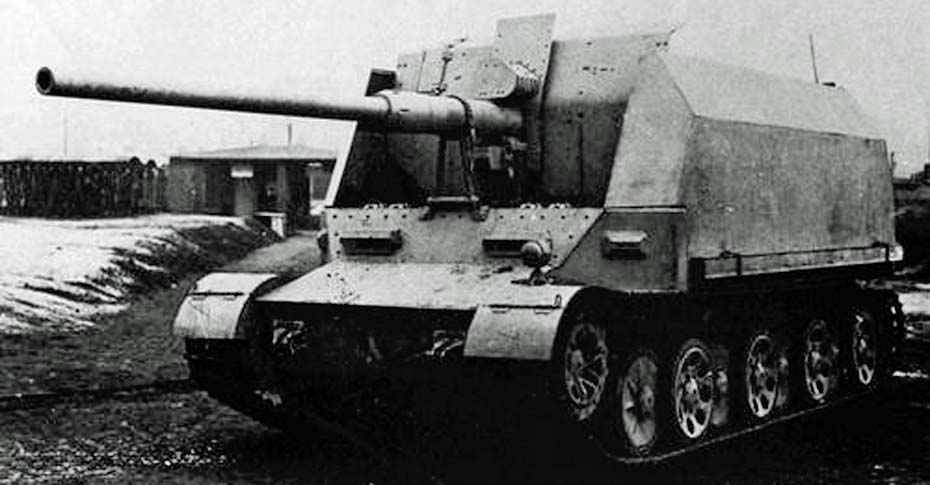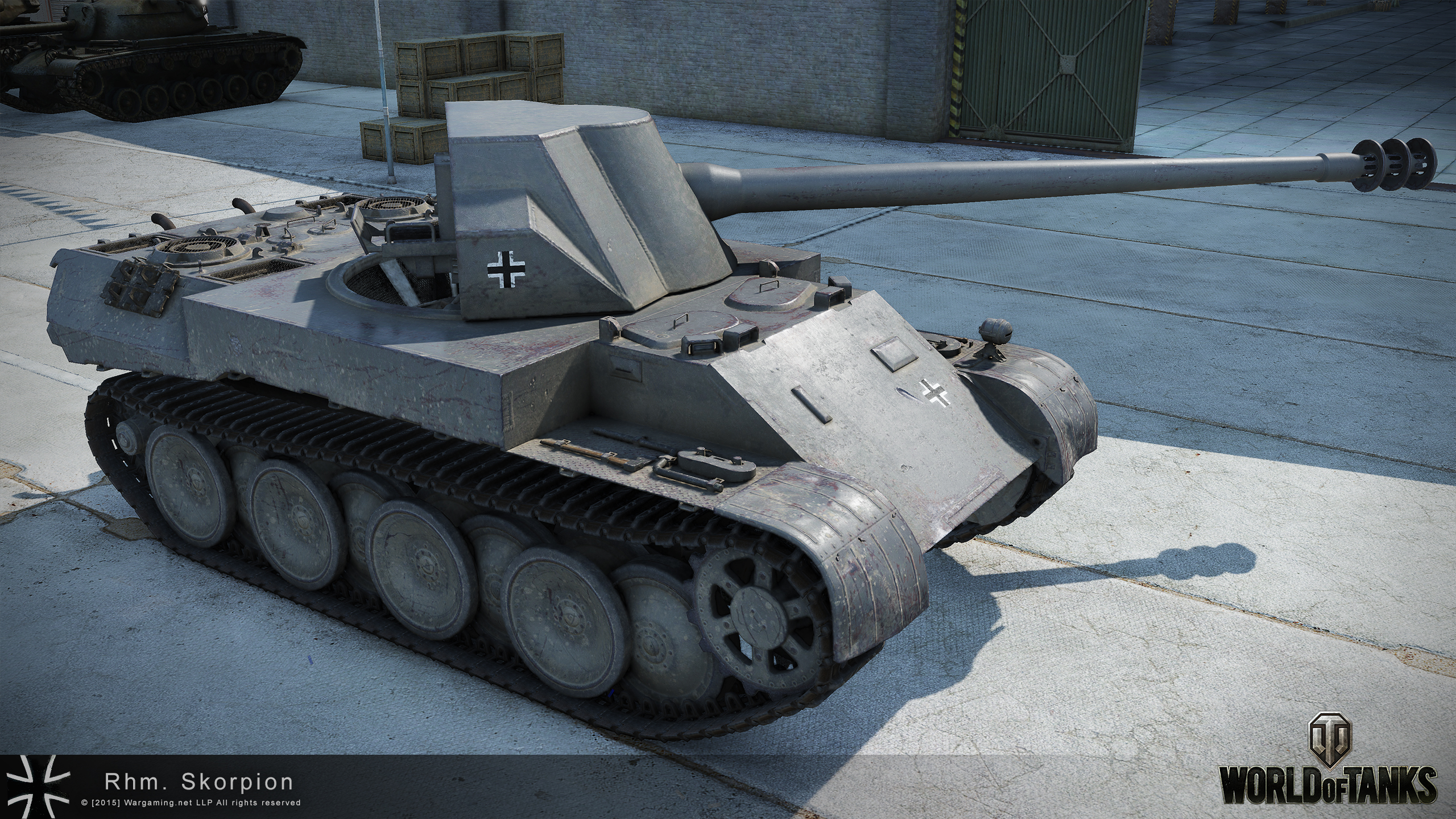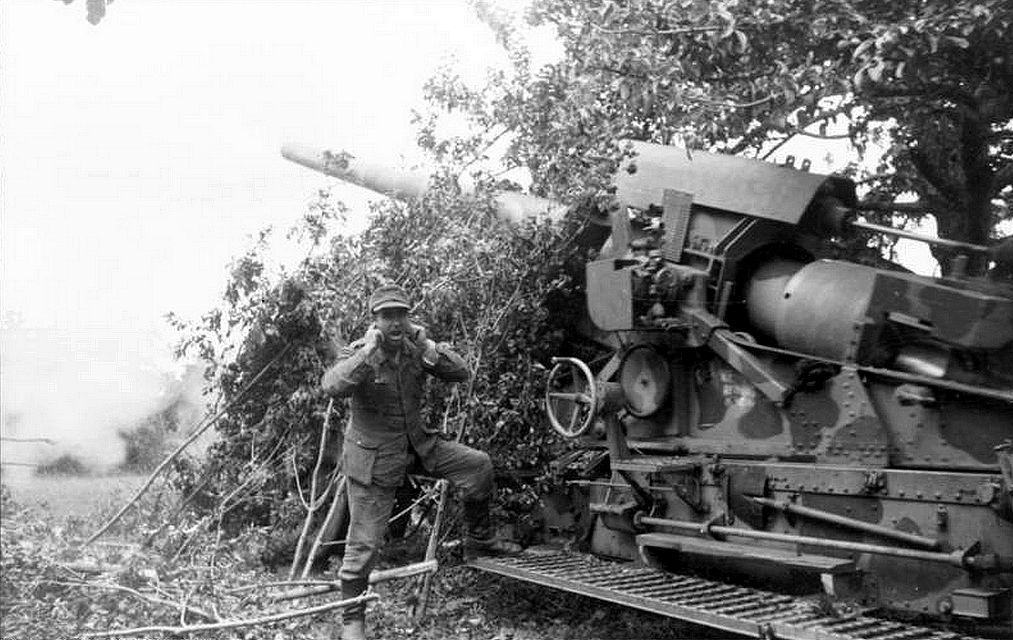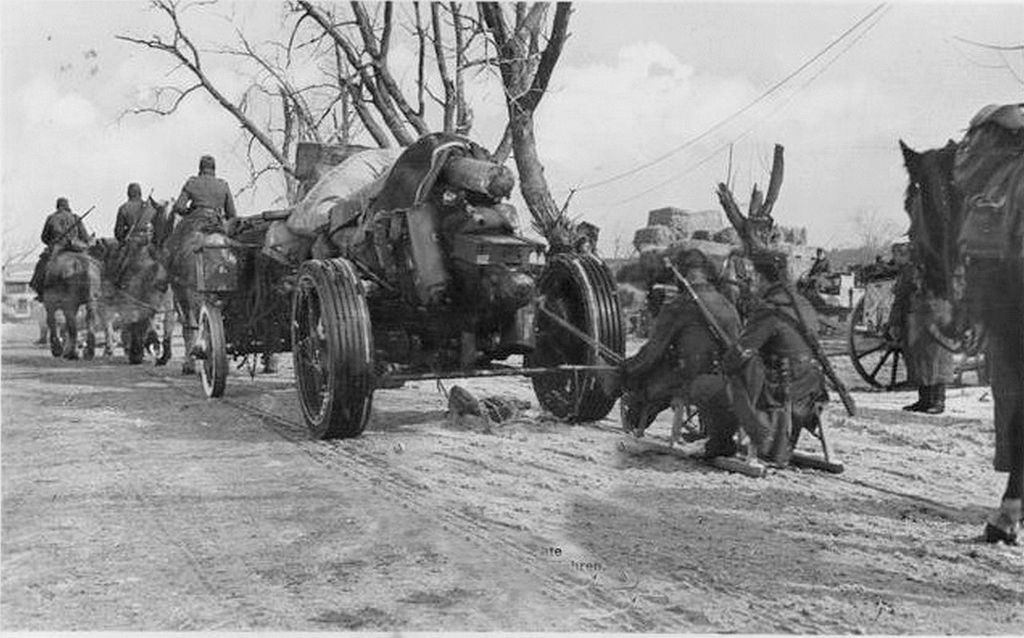An NCO riding beside a formation of "Green Cadre" (Zeleni Kadar) militia. The youngsters in the background enthusiastically salute. He could be a liaison looking for replacements or new recruits to be turned over to the replacement training unit of the division
 Grand Mufti Al-Husseini inspects the Panzerjäger (Anti-tank) battalion. From left to right: SS-Unterscharführer Asmin Haznadar, SS-Sturmbannführer Hussein Djozo and the Mufti. Haznadar was born on 12 May 1918 in Banja Luka and was a Bosnian Muslim who served in the Croatian Home Guard and joined the division in 1943. He was with the Panzerjäger battalion and was transferred to Kama (second Croatian SS division) in 1944. Djozo was one of the leading Imams in the division and responsible for the Imam-Training-Course. He served with the division until the end of war.
Grand Mufti Al-Husseini inspects the Panzerjäger (Anti-tank) battalion. From left to right: SS-Unterscharführer Asmin Haznadar, SS-Sturmbannführer Hussein Djozo and the Mufti. Haznadar was born on 12 May 1918 in Banja Luka and was a Bosnian Muslim who served in the Croatian Home Guard and joined the division in 1943. He was with the Panzerjäger battalion and was transferred to Kama (second Croatian SS division) in 1944. Djozo was one of the leading Imams in the division and responsible for the Imam-Training-Course. He served with the division until the end of war.
 Arrival of the Handschar division in Le Puy, southern France, 3 June 1943. The division was accommodated mainly in towns and villages in the Aveyron and Lozère dèpartements. For a long period after its official formation, the division was unnamed and was referred to as the "Kroatische SS-Freiwilligen-Division" (Croatian SS-Volunteer-Division) or simply the "Muselmanen Division" (Muslim Division). It was difficult for the Germans to say Bosnian names, so the recruits were simply called Mujo(s) Arrival of the Handschar division in Le Puy, southern France, 3 June 1943. The division was accommodated mainly in towns and villages in the Aveyron and Lozère dèpartements. For a long period after its official formation, the division was unnamed and was referred to as the "Kroatische SS-Freiwilligen-Division" (Croatian SS-Volunteer-Division) or simply the "Muselmanen Division" (Muslim Division). It was difficult for the Germans to say Bosnian names, so the recruits were simply called Mujo(s)
Arrival of the Handschar division in Le Puy, southern France, 3 June 1943. The division was accommodated mainly in towns and villages in the Aveyron and Lozère dèpartements. For a long period after its official formation, the division was unnamed and was referred to as the "Kroatische SS-Freiwilligen-Division" (Croatian SS-Volunteer-Division) or simply the "Muselmanen Division" (Muslim Division). It was difficult for the Germans to say Bosnian names, so the recruits were simply called Mujo(s) Arrival of the Handschar division in Le Puy, southern France, 3 June 1943. The division was accommodated mainly in towns and villages in the Aveyron and Lozère dèpartements. For a long period after its official formation, the division was unnamed and was referred to as the "Kroatische SS-Freiwilligen-Division" (Croatian SS-Volunteer-Division) or simply the "Muselmanen Division" (Muslim Division). It was difficult for the Germans to say Bosnian names, so the recruits were simply called Mujo(s)
 Hermann Schifferdecker was born on August 10th, 1921 (Zuzenhausen-Sinsheim/Baden, Germany) and commanded I./Waffen-Gebirgs-Jäger Regiment der SS 27 (kroatisches Nr. 1) from Feb. 17, 1945-April 8, 1945. He was awarded with Eisernes Kreuz 1. Klasse (March 30 1945), Deutsches Kreuz in Gold (April 1945 - at that time he was SS-Hauptsturmführer of Reserve) and EK2. He died back in 2006.
Hermann Schifferdecker was born on August 10th, 1921 (Zuzenhausen-Sinsheim/Baden, Germany) and commanded I./Waffen-Gebirgs-Jäger Regiment der SS 27 (kroatisches Nr. 1) from Feb. 17, 1945-April 8, 1945. He was awarded with Eisernes Kreuz 1. Klasse (March 30 1945), Deutsches Kreuz in Gold (April 1945 - at that time he was SS-Hauptsturmführer of Reserve) and EK2. He died back in 2006.









